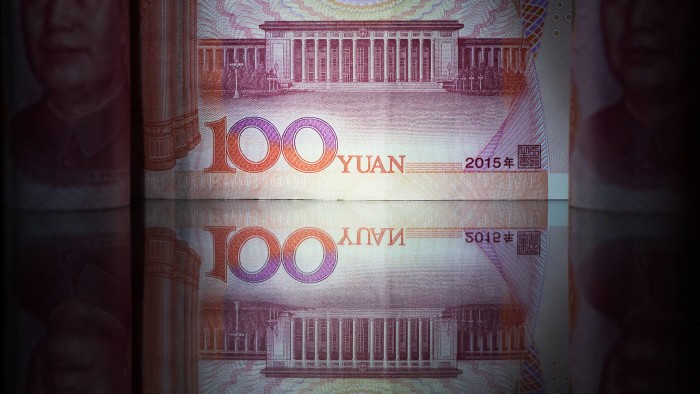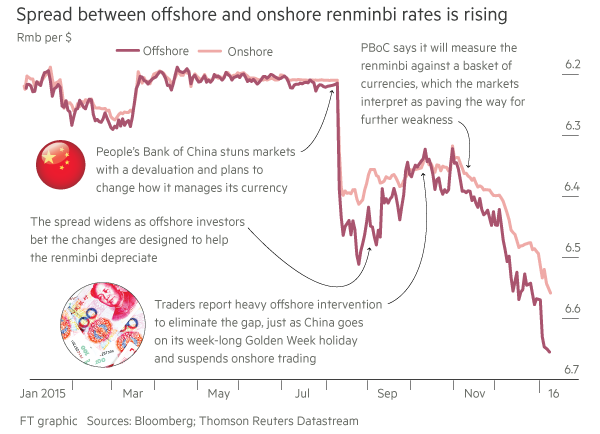Explainer: Why is the renminbi rattling markets?

Simply sign up to the Currencies myFT Digest -- delivered directly to your inbox.
As China’s renminbi swings wildly and its stock markets tumble in an echo of last summer’s rout, we look at what it is about the central bank’s currency management that is unsettling investors across the globe.
What is it exactly that is spooking world currency markets?
Call it the painful process of learning to speak PBoC, or People’s Bank of China. The world’s foreign exchange markets are based in London and New York and are experienced in parsing every utterance by western policymakers, whose tone and tactics they feel they understand.
This is logical enough since the US dollar is still one side of almost 90 per cent of all currency trades and the euro about 40 per cent. China’s renminbi, meanwhile, is involved in about 2 per cent of trades according to the same data — and PBoC officials do not talk publicly anywhere near as frequently as the likes of Janet Yellen, US Federal Reserve chair, or Mario Draghi, ECB president.
So why is something that doesn’t dominate trading, dominating trading?
The offshore renminbi is one mechanism through which investors’ rising fears about China’s economy can be expressed — hence its weakness. The fact that the tightly managed onshore rate is also softening, albeit more gradually, is considered by international investors to be official validation of their sell-China bets.
For all but a few specialists, emerging markets are usually a binary yes-no type bet in the currency world. China is far too big to be lumped with other emerging markets even though analysts face the same problems, including poor and unreliable data.
Forex regime change is always bumpy too as traders figure out how a new system will work in practice.
Why can’t the PBOC just talk more like the Fed or the ECB?
Central banks evolve along with their countries — and official China’s relationship with the media is far more limited, to put it mildly, than its equivalent in the US or Europe.
Amid the current vogue for transparency, it is worth remembering that it too is still evolving. Only last year did the Bank of England publish details of its rate-setting meetings alongside the decision itself. And as recently as the 1980s, the Fed acted more like the PBoC — it did not publish its key interest rate, preferring to leave markets to guess.
The PBoC has in fact given more information than it used to about why it changed its forex regime and how it measures the renminbi. Just last month, it published the make-up of the basket of currencies against which it is tracking the renminbi.
If there’s a basket that tells us what the PBoC is tracking, why are we fixated on the renminbi-dollar rate?
Simply put, this is what is traded. Trade-weighted baskets similar to the PBoC’s have long been available for most major currencies but it is the currency pairs — such as dollar-euro, dollar-yen and dollar-renminbi — that are still widely considered minute-by-minute indicators of market mood.
OK, but why the particular fixation with the daily renminbi “fix”?
Old habits die hard. Before it changed its currency regime in August, the PBoC’s fixing of a midpoint from which the onshore rate may trade 2 per cent in either direction was its way of telling the market where it wanted the renminbi to head.
Now it wants the “fix” to be considered more a reaction to the previous day’s market moves — but offshore traders and analysts are reluctant to give up what they consider to be the one regular piece of guidance they get from China’s central bank.
How might this all calm down then?
Over time, is the best guess. Traders are mindful that the PBoC can deploy China’s vast forex reserves to stem the slide whenever it wants — and reportedly, it has been doing so.
One interpretation of China’s actions is that it does not so much want a weaker renminbi as to introduce some volatility to make would-be speculators wary. That, at least, it has achieved.

Comments